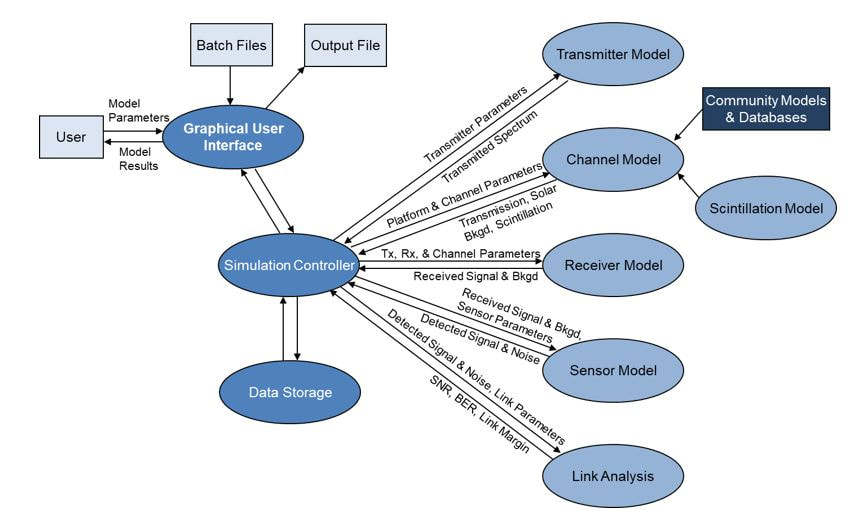Modeling / Simulation
Modeling and simulation are central to the process followed by S3 Environmental Sensing (ES). ES has developed several end-to-end models, critical for initial conceptual proposal, brassboard design trades, and analysis of data. Most ES models utilize LabVIEW, MathCad, or MATLAB, with documentation tracing the implementation to citable literature. Environmental Sensing employees have engaged in extensive campaigns to validate these models in the field with NASA and DOE customers.
End-to-End PN Ranging and Spectroscopy Models
Environmental Sensing employees developed an extensive MATLAB model of lidar transceivers and environmental channels for evaluating photon-counting pseudo-random noise (PN) ranging initially for ICE, a NASA Instrument Incubator Project for ice sheet topographic measurement. The model was utilized both to inform the intended capability and perform trade-studies on brassboard components, leading to an airborne validation campaign. After completion of the brassboard and model validation, the model was again used to propose and implement new configurations and capabilities, such as multi-pixel ranging and improved eye-safety. Further enhancements to the model allowed for evaluation and proposal of orbital cases.
Airborne Leak-Detection Simulation
A dedicated LabVIEW model was developed to demonstrate the feasibility of fiber-based spectroscopic lidar to commercial pipeline customers. The LabVIEW architecture allowed operators to “twist the knobs” themselves to trade parameters and investigate the impact of environmental factors such as speckle. The implementation suggested by the model was developed into a brassboard and validated terrestrially.
Models Aiding in Analysis
Specialized modeling is often warranted to address phenomena found in validation. When new, customer-supplied MFLL waveforms did not perform as well as intended, ES personnel conducted extensive spectral domain analysis in LabVIEW to trace the root cause. After presentation to the customer, the new spectral domain model was used to predict the characteristics of more acceptable waveforms, validate new customer proposed waveforms, and correct previously collected data.
End-to-End Communications Link Environmental Modeling
ES employees developed an extensive MATLAB laser communications model which has been adapted to model ground, air, and space spectroscopic measurements. This model proved key in the development of the GreenLITE™ and LAnTeRN spectroscopic lidars.




